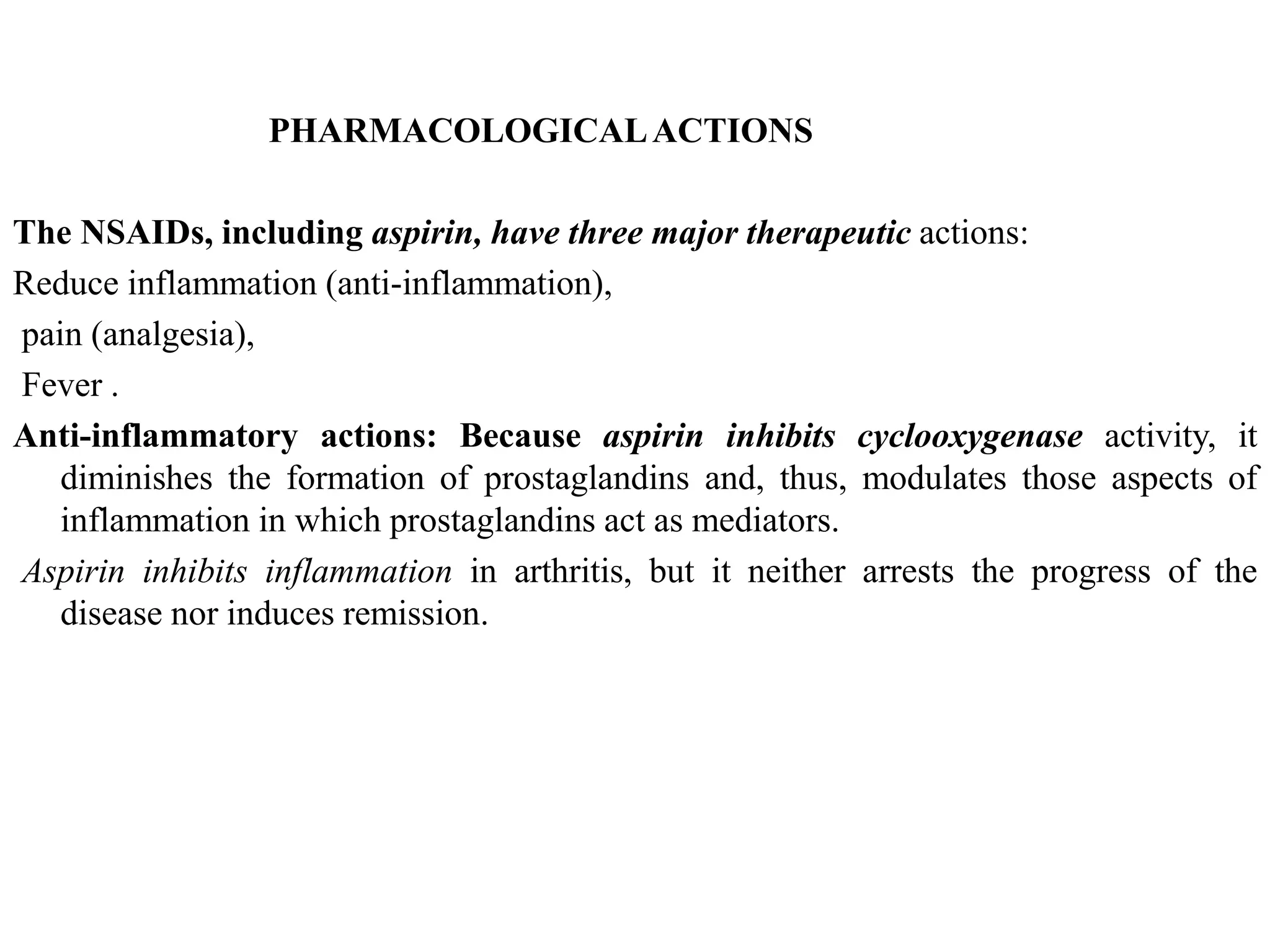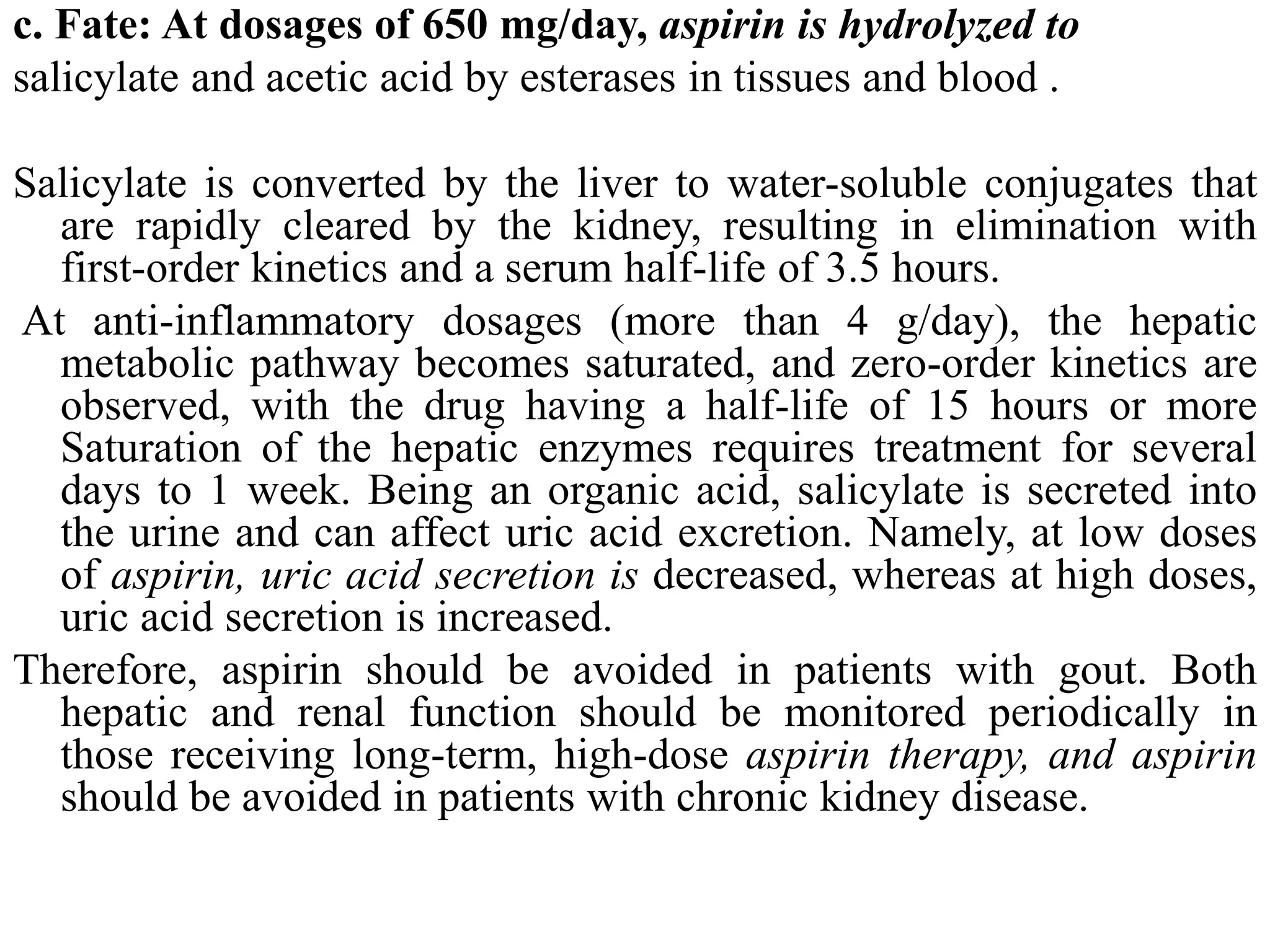This document summarizes key information about aspirin and other nonsteroidal anti-inflammatory drugs (NSAIDs). It discusses aspirin's mechanism of action as an irreversible inhibitor of cyclooxygenase, leading to reduced prostaglandin production and its analgesic, antipyretic and anti-inflammatory effects. It also outlines aspirin's effects on platelets and potential interactions, as well as its therapeutic uses including cardiovascular applications. The document details aspirin's absorption, distribution, metabolism and excretion, along with its adverse effects and drug interactions.
![NSAID’S [ASPIRIN]
PRESENTED BY:
HEENA PARVEEN,
PHARMACOLOGY DEPT.,
MRCP.](https://image.slidesharecdn.com/pharmacologynewppt-211122173212/75/NSAID-S-ASPIRIN-1-2048.jpg)

![Aspirin and other salicylic acid derivatives
Aspirin [AS-pir-in] is the prototype of traditional NSAIDs and was officially approved
by the FDA in 1939.
Mechanism of action:
Aspirin is a weak organic acid that is unique among the NSAIDs in that it irreversibly
acetylates (and, thus, inactivates) cyclooxygenase .
The other NSAIDs, including salicylate , are all reversible inhibitors of cyclooxygenase.
Aspirin is rapidly deacetylated by esterases in the body, thereby producing salicylate,
which has anti-inflammatory, antipyretic, and analgesic effects.
The antipyretic and anti-inflammatory effects of salicylate are due primarily to the
blockade of prostaglandin synthesis at the thermoregulatory centers in the
hypothalamus and at peripheral target sites.
Furthermore, by decreasing prostaglandin synthesis, salicylate also prevents the
sensitization of pain receptors to both mechanical and chemical stimuli.
Aspirin may also depress pain stimuli at sub-cortical sites (that is, the thalamus and
hypothalamus).](https://image.slidesharecdn.com/pharmacologynewppt-211122173212/75/NSAID-S-ASPIRIN-3-2048.jpg)




![The salicylates lower body temperature in patients with fever by impeding PGE2
synthesis and release.
Aspirin and other NSAIDs reset the “thermostat” toward normal.
This rapidly lowers the body temperature of febrile patients by increasing heat
dissipation as a result of peripheral vasodilation and sweating.
Aspirin has no effect on normal body temperature.
d. Respiratory actions:
At therapeutic doses, aspirin increases alveolar ventilation.
[Note: Salicylates uncouple oxidative phosphorylation, which leads to elevated CO2
and increased respiration.]
Higher doses work directly on the respiratory center in the medulla, resulting in
hyperventilation and respiratory alkalosis that usually is adequately compensated for
by the kidney. At toxic levels, central respiratory paralysis occurs, and respiratory
acidosis ensues due to continued production of CO2.](https://image.slidesharecdn.com/pharmacologynewppt-211122173212/75/NSAID-S-ASPIRIN-8-2048.jpg)









